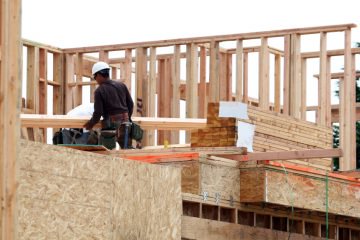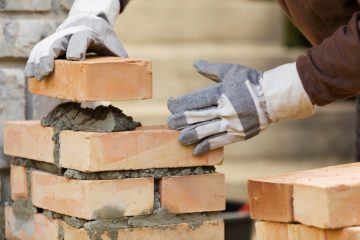Amount of New Affordable Homes Soars by 55%
The amount of new affordable homes created in England soared by 55% in 2014-15, according to official data. However, there was a decrease in the supply of properties available at the lowest social rents, taking it to the lowest level for more than 20 years.
During the year, 66,640 affordable homes were provided, up from 42,870 in 2013-14, revealed the Department for Communities and Local Government. This figure is made up of new build homes and properties bought by housing associations and councils.
The number does not take into account any affordable homes that were lost over the year, but it is the highest in 19 years and more than double the 32,920 created in 2002-03.
However, the amount of homes built for social rent – the cheapest price charged by local authorities and housing associations, and available to those on council housing lists – dropped by 12% to 9,590, lower than the 10,920 recorded in 2013-14 and the lowest since records began in 1991-92.
The main cause of the overall increase was a jump in the number of homes provided at affordable rent. This tenure, launched in 2011, allows providers to charge rents of up to 80% of the local market rate.
Over the last year, 40,710 properties were built for rent under this scheme, more than double the figure recorded in the previous 12 months.
Government statistics found that generally, tenants are paying 70% of the market rate on affordable rental homes, with the average rent standing at £123.92 per week in 2014-15. The average social rent is £85.49 a week.
In London, the typical affordable rent is £178.53 a week, or 48% of the market rate, while social rents average £111.71 per week.
The Department for Communities and Local Government’s data shows that 270 homes were created for intermediate rent, which sits between social rent and affordable rent, and 16,080 for purchase through schemes such as shared ownership.
At presents, house builders of all but the smallest developments are required to provide some form of affordable housing, or a payment to the local council instead. However, the Government’s starter homes scheme will allow new houses to be built without this requirement.
The Chartered Institute of Housing (CIH) welcomes the rise in affordable housing, but warns that the uphill trend in the amount of rental homes could be reversed in the future.
Terrie Alafat, Chief Executive of the CIH, comments: “The Chancellor announced a significant investment in housing in the Spending Review and Autumn Statement, but most of that money is going towards homeownership.
“We know the Government is committed to increasing the supply of new homes, but it looks like support for any kind of affordable rent is going to fall at a time when there is an increasing need for this kind of housing. What about people who can’t afford to buy, even with Government support?”1
Chief Executive of homelessness charity Shelter, Campbell Robb, also believes the figures are encouraging, but adds: “The true test will be whether or not these homes are affordable to people on ordinary incomes.
“The only way to turn around our housing crisis for the long-term is to provide homes for rent or buy that people on low or average wages can actually afford.”1
And Neal Hudson, UK Housing Market Analyst at Savills, highlights data that reveals the amount of new homes in the pipeline has fallen over the same period, from 4,625 starts in 2013-14, to 3,604 in 2014-15.
“Affordable housing completions look to have finally recovered from the cut in grant and shift to affordable rent,” he observes. “Unfortunately, the uncertainty created by Government’s policy approach looks to be feeding into housing starts, which have slowed and are now below the level of completions.”1
The Green Party Member of the London Assembly, Darren Johnson, concludes: “These figures hide the fact that the homes being built are a lot less affordable than they were five or ten years ago. Fewer than one in five affordable homes built last year were for social rent – at levels that people on low incomes can actually afford.
“The total figures for the last year only look impressive because a big lump of a four-year programme has been finished in one year. The two previous years saw very few homes finished. There’s a big drop followed by a big spike. On average, over the past few years, the level of affordable housing building has remained far too low.”1
1 http://www.theguardian.com/money/2015/dec/02/new-affordable-homes-in-england-jumps-dclg






